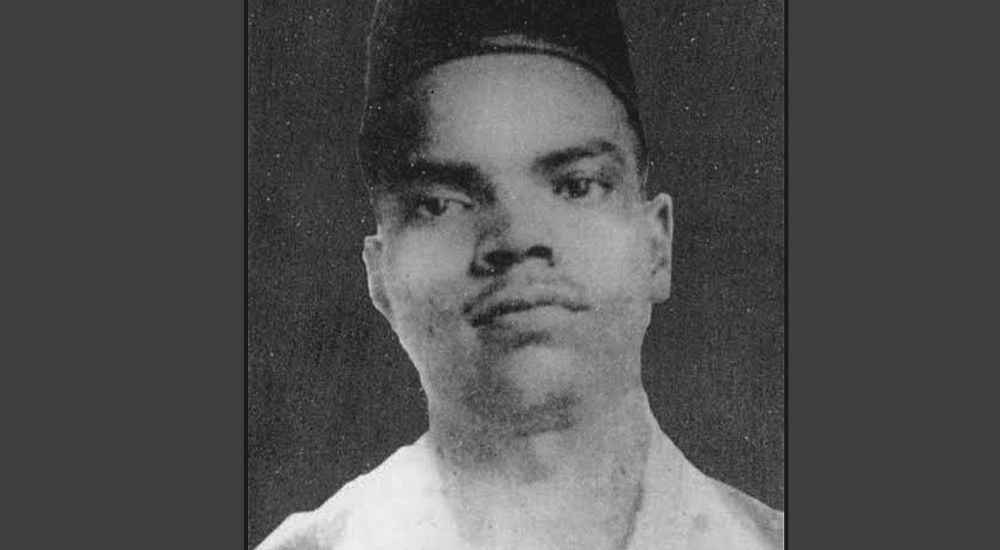Updated January 17, 2023
Shivaram Rajguru was an Indian Revolutionary and a great freedom fighter. He played a key role in India’s Independence. Very few people are aware of his full name, Hari Shivaram Rajguru.
Rajguru took inspiration from Lokmanya Tilak’s revolutionary philosophy. He was a member of the Hindustan Socialist Republic Association (HSRA) organization.
He had grown up witnessing the horrific crimes the Imperial British Raj did against Indian peoples. This affected him very deeply and made him mad about the Independence of India. He started to join hands with the revolutionaries in support of India’s freedom struggle.
Rajguru actively participated in all the revolutionary activities conducted by HSRA during India’s Struggle for freedom.
He is well known for his role in the killing of British policeman John P. Saunders, who was responsible for the attack that resulted in the murder of veteran Indian freedom fighter Lala Lajpat Rai.
Childhood and Early Life
In a Marathi Deshastha Brahmin family, Rajguru was born on August 24, 1908, to Parvati Devi and Harinarayan Rajguru. When he was only six years old, his father passed away, leaving his older brother Dinkar to take care of the family.
His elementary education was at Khed, and he then joined Pune’s New English High School for further studies. Once Shivaram Rajguru was punished by his elder brother for failing an English exam. In front of Shivaram Rajguru’s new sister-in-law, his brother instructed him to read aloud from an English lesson.
Shivaram fled the house out of embarrassment and barely had 11 paise on him. He was just 15 years old when he left his family and travelled six days barefoot to get to Varanasi, where he enrolled at the Sanskrit Mahavidyalaya for higher education.
At a very young age, he enrolled in Seva Dal. Shivaram once participated in a training session at Ghatprabha led by Dr N. S. Hardikar, a Congress politician and freedom fighter.
When Shivaram Rajguru joined the Hindustan Socialist Republican Association (HSRA) at the age of 16, his friends began referring to him as Raghunath. Shivaram Rajguru was familiar with a number of Indian scriptures. He was the HSRA’s official professional shooter, also known as its gunman.
Revolutionary Activities of Shivaram Rajguru
Shivaram Rajguru and Bhagat Singh assassinated British policeman J. P. Saunders in Lahore in December 1928 with the assistance of Sukhdev Thapar and Chandra Shekhar Azad. On December 19, 1928, Sukhdev Thapar asked Durga Devi Vohra, the widow of Bhagwati Charan Vohra and other freedom fighters, for assistance soon after J. P. Saunders had been killed.
Shivaram Rajguru and Bhagat Singh desired to travel from Lahore to Howrah. To avoid being recognized by British officials while they were travelling, Bhagat Singh dressed in western-style and also trimmed his long hair and beard.
Durga Devi Vohra pretended to be Bhagat Singh’s wife, while Shivaram Rajguru pretended to be the servant carrying their luggage. In this manner, Bhagat Singh and Vohra departed for Howrah and Rajguru departed for Benares.
After being caught by the British Police, they were all taken into custody along with another 21 co-conspirators. They claimed throughout the court proceedings that they murdered Saunders to take revenge for the death of the Punjab Lion “Lala Lajpat Rai, who was killed during the lathi charge by police at the protest against the Simon Commission.
In the courtroom, during their trials, Shivaram Rajguru was frequently observed purposefully making fun of the British judge by responding to his questions in Sanskrit. The judge became angry as a result and yelled at him. Shivaram signalled Bhagat Singh to translate his responses to the judge into English.
Death and Legacy of Shivaram Rajguru
On March 23, 1931, Bhagat Singh, Sukhdev Thapar, and Shivaram Rajguru were hanged to death. The trio was to be hanged on March 24, 1931, but was executed one day earlier to avoid crowds and protests.
Shivaram Rajguru’s ancestral home, known as “Rajguru Wada,” has been turned into a monument in his honour. This memorial, which is located along the Pune-Nashik Road at the banks of the Bhima River, has been designated by the Indian government as a tourist destination.
To honour Shivaram Rajguru for the sacrifices he made by taking part in the Indian freedom movements, his birthplace, Khed was renamed Rajgurunagar. Anil Verma, an Indian novelist, published “Ajeya Krantikari Rajguru” on August 24, 2008, to commemorate the 100th anniversary of Shivaram Rajguru’s birth.
In Vasundhara Enclave, Delhi, a college with the name “Shaheed Rajguru College of Applied Science for Women” was established in his honour. In 2013, the Indian government released a postage stamp honouring Shivaram Rajguru’s efforts for India’s independence.
Most Frequently Asked Questions
Ans: Yes, He belonged to a Marathi Deshastha Brahmin family from Pune.
Ans: Shivaram Hari Rajguru was his full name.
Ans: He was born at Rajgurunagar (Khed).
Ans: Inquilab Zindabad was the slogan of Bhagat Singh, Shivaram Rajguru, and Sukhdev.
